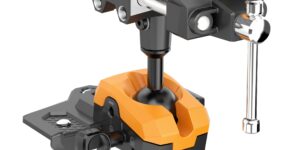MAKING AN IMPACT
Michelle Krimbel of Columbia Marking Tools examines how and why impact marking is the most environmentally friendly, green and cost-effective method of parts marking and traceability.
Posted: May 1, 2009
Today?s manufacturers are consciously implementing green initiatives in their manufacturing processes to reduce their carbon footprint, become more environmentally friendly, and reduce manufacturing costs.
Most companies start their green strategy with easily recognizable programs like replacing light bulbs, launching recycling programs or choosing energy efficient technology. The key is to get manufacturing engaged with green thinking, which in some cases doesn?t have to involve advanced technology.
For example, marking and traceability are key issues in analyzing and tracking parts and production processes in all industries and are essential to QS and ISO certification procedures.
All parts require some type of marking. Without question, the most environmentally friendly, green and cost-effective method is impact marking. Laser and dot peen markers use a lot of electrical energy. Inkjet markers tend to be messy in a production environment and create toxic chemical disposal issues. So today manufacturing is recognizing and applying the green benefits of impact marking. Conventional impact markers are air-powered devices that take advantage of mass and velocity to compound the marking force generated by air pressure. Figure 1 shows the wide variety of these marker types, along with some different mounting configurations that are available.
Air impact markers are ideal for automatic applications requiring speed or operating under adverse conditions, even when immersed in cutting fluids. Costs range from $190 to $2,000.
Air impact markers instantaneously indent a permanent mark into metal surfaces. They have few mechanical parts and are self-contained for ease of application and use (Figure 2). These units have an air-actuated rod housed within a cylinder that is capable of containing and efficiently venting compressed air, a stamp holder (usually integral with the rod), and a stamp.
By encapsulating the internal resonance sound within the iron composite casting, the air impact marking action results in a 44 percent reduction in noise level. Operation is initiated by a simple four-way air valve, and the internal patented air controls complete the automatic cycle.
Cycle times (in both directions) for impact markers range from 0.5 to 0.8 sec, fed by air valves that have a constant volume of 8CV. This short duration of air pressure controls both telescoping to the part, as well as generating the impact force to the stamp end of the rod, embedding the characters directly into the part.
Size selection of an impact marker application is a function of the number of parts to be marked, cycle time, material, the number of characters being marked and the marking force required. Stamp life of an air impact marker is determined by the material mark depth and the material hardness, which can range from 50,000 to 85,000 parts per stamp. Maximum hardness for impact marking is under 32Rc, which fits 90 percent of all parts that are marked.
Air impact markers are well suited for automatic applications requiring speed and can operate under adverse conditions, even when immersed in cutting fluids. They also can be used in stand-alone marking operations and are a simple, effective method to mark serial and part identification numbers (see Figure 3).
Where space is less critical, more sophisticated air impact markers provide soft-impact marking and lower noise levels, making them ideal for production line marking. The simplicity of air impact marking systems result in very low maintenance. In most new manufacturing systems, the marking requirements are part of the processing discussion between the machine builder and the manufacturer. Engineers from marker manufacturers are usually asked to review the machine tool marker applications and sign-off on their use.
In the automotive industry, impact markers are finding increased use in robotic welding/assembly cells, where they can be integrated as a marking station in the process (see Figure 4). One automotive manufacturing engineer says, "We find impact marking to be the fastest, most durable and least costly method of marking parts. It?s very basic and only takes four bolts and two air lines to get you up and running."
The quick-change design of the impact marker simply requires taking off the retainer and the backing plate to change the stamp. "We can do that in less than a minute," adds the engineer. "With a dot peen type marking machine, changing over marking pins takes a least five minutes. With a laser machine, just cleaning the lens takes at least ten minutes. With an impact marker there are practically no consumables, because we only have to change stamps once a month."
Costs for impact markers can range from $190 to $2,000, depending on the application. One to eight characters can be marked into most metals including heat-treated steels. With 20 to 100 psi of operating pressure, marking pressure from 1,500 to 30,000 lb can be obtained.
– – – – – – – – – – – – – – – – – – – – – – – – – – – – – –
Michelle Krembel is the president of Columbia Marking Tools, Inc., 27430 Luckino, Chesterfield Township, MI 48047, 800-469-6275, Fax: 586-949-8401, www.columbiamt.com.









